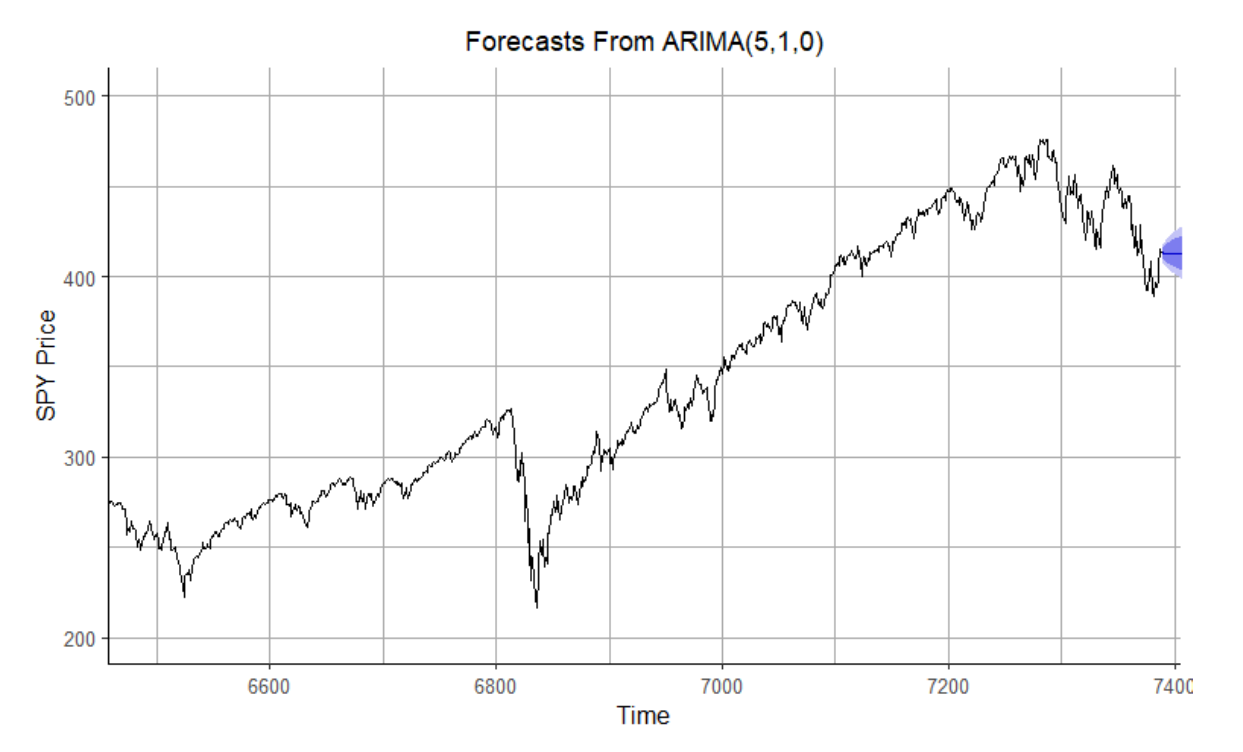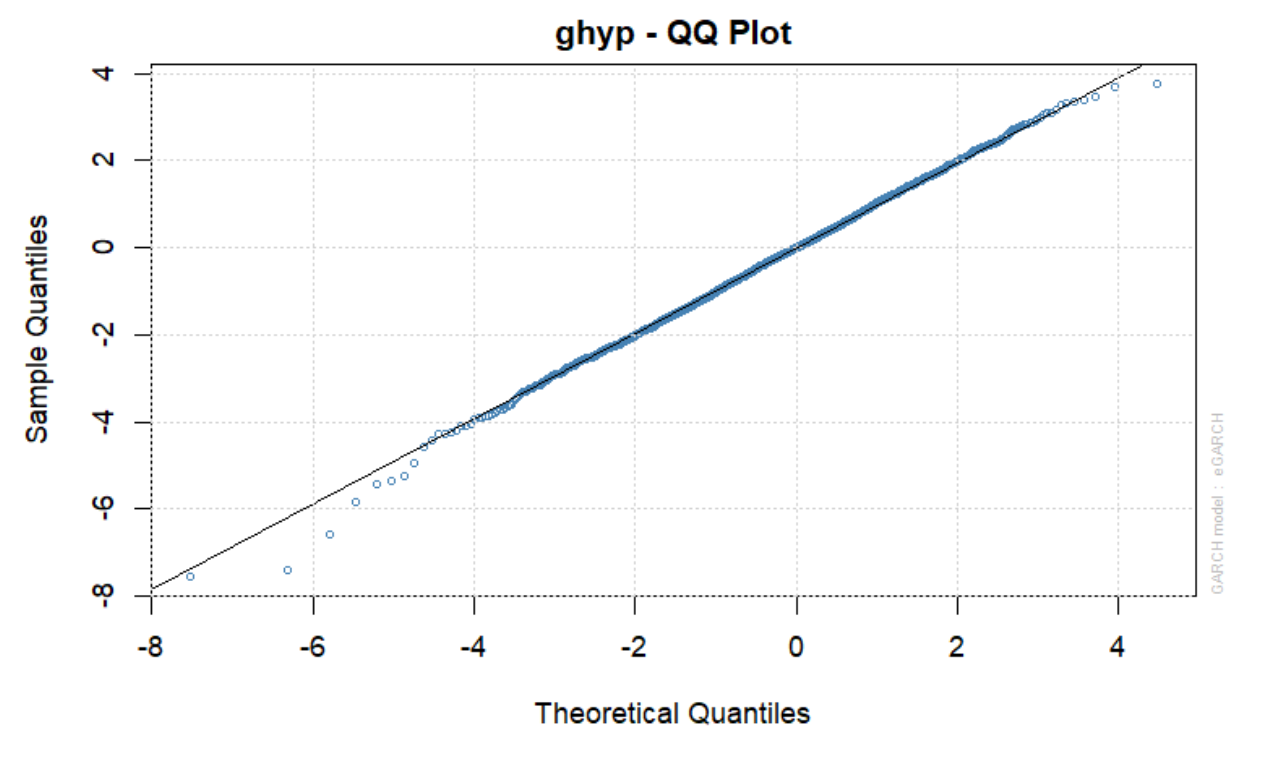SPY Financial Time Series Analysis
Overview
The SPY ETF is one of the oldest and most recognizable US-listed ETFs and is typically a frontrunner in terms of trading volume and assets under management (AUM). The fund tracks the massively popular S&P 500 index, which is representative of a diverse pool of the top 500 publicly traded companies in the United States. Its portfolio pulls from some of the most important economic sectors including information technology, healthcare, and consumer discretionary. In turn, the current valuation and trajectory of the S&P 500, and subsequently the SPY, is indicative of the overall state of the stock market. More importantly, it reflects investor confidence which often correlates with the health of the overall economy. As a consequence, its performance is heavily scrutinized. Since SPY is the most popular ETF that effectively tracks the S&P 500 index, the econometric analyses akin to those covered in this report are extremely beneficial to investors and hedge fund managers in detecting and predicting patterns in stock market volatility.
Motivation
Since the SPY ETF represents the S&P 500 index, an econometric analysis of its characteristics would be extremely beneficial for investors and hedge fund managers in detecting and predicting patterns in stock market volatility. Economists could use this information to forecast future GDP growth or potential economic depressions. Government agencies could analyze the effects of various fiscal and monetary policies on the associated movements in the SPY ETF. Managers could even use such econometric analyses of the SPY ETF to better understand when a good time to expand or downsize would be. Overall, having a relative comprehension of what the economic future holds can help anyone interpret how certain events will either directly or indirectly affect them.
Methodology & Analysis
This analysis began by examining the characteristics of both price and returns, specifically stationarity and seasonality. The augmented dickey fuller test suggests that the future and spot prices are non-stationary processes whereas the log returns are stationary. In terms of seasonality, there is no rule-of-thumb test, but by looking at a decomposition plot by removing trends and other noise the existence of seasonality was clear. There were clear monthly trends with November-April seemingly performing the best whereas May-October had the worst performance.

Next, we applied numerous time-series forecasting techniques to model the behavior of the model and to predict what will happen in the future. First, an ARIMA model was fitted for spot price and returns, both of which achieved decent forecasting power. The first image below is an illustration of the selected ARIMA model fitted and plotted over the Actual SPY price from 2021-2022. The second image is a 100 day forecast for the future price based on historical data. The dark and light blue shaded regions represent the 80% and 95% confidence intervals, respectively.


Next, a multivariate analysis was performed comparing the adjusted closing prices of the SPY and the E-Mini S&P 500 Futures to determine if a VAR or VECM model is better suited. From the first hypothesis of the Johansen procedure, r=0, it is clear that there is no statistically significant long-run relationship between the SPY and E-Mini thus VAR is the preferred model. Moreover, the Granger causality test indicates that SPY prices cause E-Mini Future prices. The last time series characteristic examined was volatility. To model the variance of SPY, various GARCH models were assessed, the best of which was an EGARCH(1,1) model with a generalized hyperbolic distribution (GHYP). The image below shows the QQ-plot of the standardized residuals of the EGARCH model. In the initial analysis, we discovered that the distribution of returns is not normal. However, after testing other distributions we were able to achieve a better fitting model using the GHYP distribution. From the QQ-plot, it's clear that this distribution provides a good fit for the data, effectively accounting for the fat tails and heavy left skew. We can use this model specification to forecast the volatility of the SPY daily returns over the next 20 days.

We can use this model specification to forecast the volatility of the SPY daily returns over the next 20 days. The plots on the left and right below illustrate the volatility and mean predictions, respectively. The model predicts SPY daily return volatility to remain stable over the next 20 days, with increasing uncertainty across the time period.

Finally, a value-at-risk (VaR) analysis was performed, where both VaR and ES were calculated for a variety of thresholds. The diverse nature of the SPY ETF makes it a great investment for those looking for a low-risk option. The VaR analysis performed in section G reflects this statement as the maximum expected loss in any given day is relatively low compared to more volatile investments. As a whole, the SPY fund is a safe investment option for investors of all ability levels. This report is meant to be readable and has information that is useful even to the novice investor. After all, having a relative comprehension of what the economic future holds can help anyone interpret how certain events will either directly or indirectly affect them. As I noted earlier, the full report is linked below and provides a far more in-depth analysis.